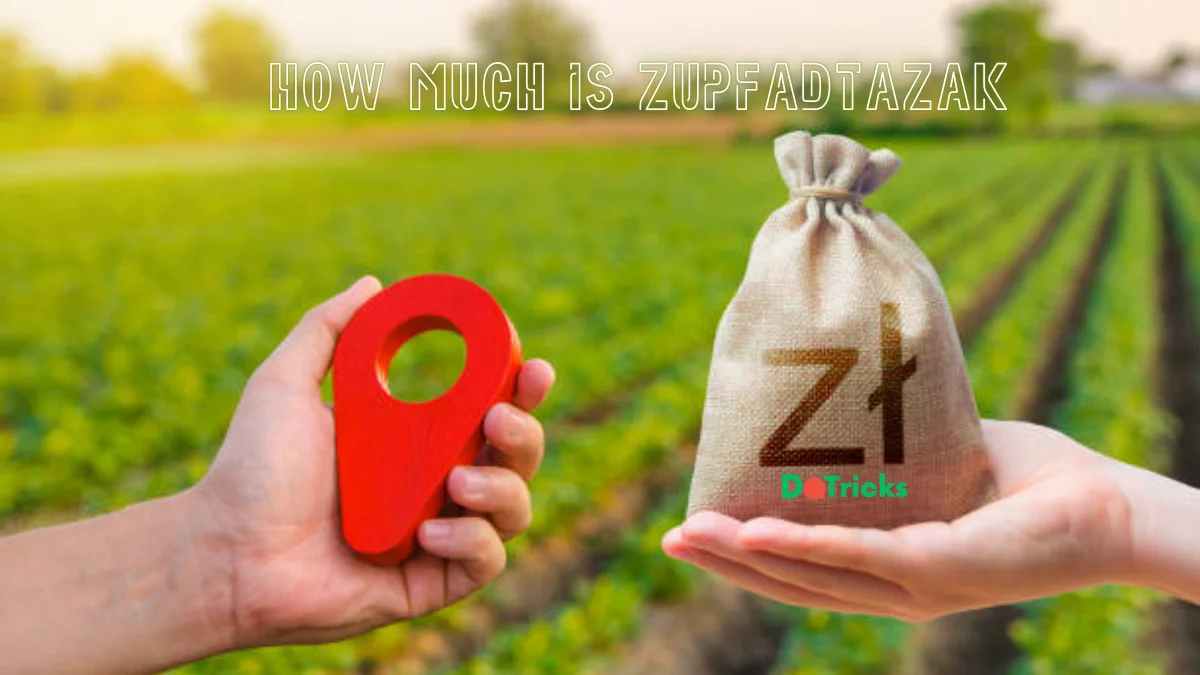General
Insoya Technique: Boost Colour Intensity and Fabric Life

Introduction to Insoya
Are you tired of dull, faded fabrics that lose their charm after just a few washes? If so, you’re not alone. Many fabric enthusiasts struggle with maintaining color intensity and extending the life of their favorite garments. Enter the Insoya technique a game-changer in fabric care that’s turning heads in the textile world. This innovative approach not only revitalizes colors but also enhances the longevity of your materials, making them look as good as new for much longer. Ready to explore this exciting method? Let’s dive into what makes Insoya stand out in the realm of fabric care!
What is the Insoya Technique?
The Insoya Technique is a revolutionary method designed to enhance color intensity while prolonging the life of fabrics. This technique harnesses advanced dyeing processes that are gentle yet effective, ensuring textiles remain vibrant and durable.
At its core, the Insoya Technique utilizes specialized formulas for optimal absorption. Fabrics treated with this method boast richer colors that resist fading over time. It’s not just about aesthetics; it’s also about maintaining quality.
Additionally, the technique focuses on environmental sustainability. By minimizing waste and using eco-friendly materials, it resonates well with conscious consumers seeking responsible fabric care solutions.
Whether you’re working with cotton, wool, or synthetic fibers, the Insoya Technique adapts seamlessly to various textile types. Its versatility makes it accessible for both personal use and industrial applications alike.
The Science Behind the Insoya Technique
The Insoya Technique is rooted in advanced textile science. It leverages a unique blend of natural compounds that penetrate fabric fibers at a molecular level. This innovation enhances color retention while maintaining the integrity of the material.
Through a special activation process, these compounds bond with dye molecules. This not only intensifies colors but also reduces fading over time. The technique works by creating protective barriers around each fiber.
Furthermore, the Insoya Technique employs eco-friendly components that are gentle on fabrics and skin alike. This means you can enjoy vibrant textiles without harmful chemicals coming into contact with your clothes.
What’s fascinating is how this method optimizes wash cycles too. Fabrics treated with Insoya require less frequent washing, preserving their structure and reducing wear and tear.
Benefits of Using the Insoya Technique for Fabric Care
The Insoya Technique revolutionizes fabric care by enhancing color vibrancy. This method ensures that your textiles maintain their rich hues, preventing the dulling often seen with traditional washing methods.
Additionally, it extends the lifespan of fabrics significantly. Using Insoya reduces wear and tear during cleaning cycles, allowing clothes to look new for longer periods.
Another advantage is its eco-friendly nature. The technique minimizes water usage and lowers energy consumption compared to conventional laundry practices.
Moreover, it’s gentle on delicate materials like silk and lace. This tenderness protects fibers while still delivering a powerful clean.
Implementing the Insoya Technique can save you money over time. Less frequent replacements mean more savings in your wardrobe budget.
Step-by-Step Guide to Using the Insoya Technique
To start using the Insoya Technique, gather your fabrics and ensure they are clean. This method works best on freshly laundered materials.
Prepare a solution by mixing Insoya with water according to the recommended ratio on the packaging. Stir well until fully dissolved, ensuring no residue remains.
Submerge your fabric in this mixture for about 20 to 30 minutes. This soaking period allows the dye-enhancing properties of Insoya to penetrate deeply into the fibers.
After soaking, rinse thoroughly with cool water until it runs clear. This step is crucial for removing any excess product while locking in color vibrancy.
Air dry your fabrics away from direct sunlight. Sunlight can fade colors quickly, so aim for a shaded space that allows airflow without harsh exposure.
Tips for Maintaining and Extending Fabric Life with the Insoya Technique
To get the most out of the Insoya Technique, proper maintenance is essential. First, always wash fabrics in cold water when possible. This helps preserve color intensity and fabric integrity.
Next, avoid excessive agitation during washing. Gentle cycles are your best bet for keeping fibers intact while still removing dirt and grime effectively.
When drying, opt for air-drying whenever feasible. Direct sunlight can fade colors over time; hence shade or indoor spaces work better for long-term vibrancy.
Consider using a mild detergent designed specifically for colored fabrics to enhance the benefits of the Insoya Technique further. These products help maintain brightness without causing chemical damage.
Store your garments properly by folding rather than hanging them to prevent stretching or distortion in shape. Taking these simple steps will maximize both color brilliance and fabric lifespan with Insoya’s innovative approach.
Comparing the Insoya Technique to Traditional Fabric Care Methods
When evaluating fabric care methods, the Insoya Technique stands out against traditional practices. Conventional washing often involves harsh detergents that can fade colors and weaken fibers over time.
In contrast, the Insoya Technique prioritizes color preservation. It employs a unique process that enhances dye stability, ensuring vibrant hues remain intact through multiple washes.
Another notable difference lies in longevity. Traditional methods may inadvertently lead to fraying or pilling of fabrics, which shortens their lifespan. However, the Insoya Technique focuses on maintaining structural integrity while keeping textiles looking fresh.
Additionally, many traditional approaches require hot water and prolonged cycles. The Insoya Technique is more efficient; it can operate effectively in cooler temperatures and with shorter wash times.
This modern method not only conserves energy but also minimizes environmental impact compared to conventional laundry practices.
Conclusion: Why You Should Try the Insoya Technique for Your Fabrics?
The Insoya Technique offers a fresh perspective on fabric care. By enhancing color intensity and prolonging the life of your textiles, it stands out as an innovative solution for maintaining your favorite garments and home fabrics.
Using this technique can transform how you approach laundry day, turning it from a chore into a chance to revitalize your wardrobe. Its science-backed methodology ensures that colors remain vibrant while fibers retain their strength.
Whether you’re looking to refresh old clothes or protect new purchases, embracing the Insoya Technique could be one of the best decisions for your fabric collection. With just a few simple steps, you can enjoy brighter colors and longer-lasting pieces that elevate both style and comfort in every wear. Why not give it a try? Your fabrics deserve the best care possible, and with Insoya, you’re on the path to achieving just that.
General
Can I Use Cilfqtacmitd for Easy and Trusted Information

Introduction to Cilfqtacmitd and its purpose
In a world overflowing with information, finding reliable sources can be challenging. Enter Cilfqtacmitd a platform designed to streamline your search for trustworthy data. Whether you’re a student, researcher, or simply someone curious about various topics, this tool promises easy access to accurate information. But what exactly is it? And how does it stand apart from other search engines and resources? Let’s dive into the advantages of using Cilfqtacmitd and discover how you can leverage its features for all your informational needs.
Advantages of using Cilfqtacmitd for information
Cilfqtacmitd stands out for its user-friendly interface. Navigating through information becomes a breeze, allowing users to find what they need quickly.
One significant advantage is the reliability of the sources it compiles. Users can trust that the information presented is vetted and credible. This quality sets it apart in a sea of misinformation online.
Additionally, Cilfqtacmitd offers personalized results based on your search history and preferences. This tailored approach enhances the overall experience, making it easier to discover relevant insights that matter most to you.
The platform also emphasizes diversity in content types. Whether you’re looking for articles, videos, or infographics, you’ll find various formats available at your fingertips.
Regular updates ensure that you have access to current events and trends without having to sift through outdated material. This commitment keeps users informed with fresh perspectives.
How it differs from other search engines and online sources?
Cilfqtacmitd stands out in a crowded digital landscape. Unlike traditional search engines, it prioritizes trustworthiness and simplicity. You won’t find overwhelming ads or endless links leading to dubious sources.
The interface is user-friendly, making navigation straightforward for everyone. This focus on usability ensures that you can find what you need without getting lost in irrelevant information.
Additionally, Cilfqtacmitd employs advanced algorithms designed specifically to filter out unreliable content. This sets it apart from other platforms where misinformation can easily slip through the cracks.
Many users appreciate how quickly they can access credible data compared to conventional engines that often bury valuable resources under layers of less relevant results.
With its unique approach, Cilfqtacmitd transforms the way people seek information online. It creates an experience that’s not just efficient but also enriching for those who value accuracy and clarity in their searches.
Steps to use Cilfqtacmitd effectively
To use Cilfqtacmitd effectively, start by familiarizing yourself with its interface. Spend a few moments exploring the layout and features available to you.
Next, utilize specific keywords when searching for information. The more precise your terms, the better results you will receive. Experiment with different combinations if necessary.
Filters are an essential tool. They help narrow down search results based on categories or date ranges. Make sure to apply them whenever possible for optimized outcomes.
Don’t overlook the advanced search options either. These can refine your queries even further and yield targeted information quickly.
Bookmark useful pages or resources that catch your attention during your searches. This way, accessing valuable content later becomes effortless, enhancing your overall experience with Cilfqtacmitd.
Top categories of information available on Cilfqtacmitd
Cilfqtacmitd offers a diverse range of information categories, making it an invaluable resource. Users can explore health topics extensively. From wellness tips to recent medical breakthroughs, this category caters to both everyday knowledge and advanced research needs.
Another popular section is technology. Whether you’re looking for gadget reviews or the latest in artificial intelligence, Cilfqtacmitd has you covered. The updates are timely and relevant, making tech-savvy users eager to return for more insights.
For those interested in lifestyle matters, there’s a rich trove of content on travel, fashion, and food trends. This variety helps users stay informed about what’s current while offering inspiration for new adventures.
Additionally, educational resources abound on Cilfqtacmitd. This includes study guides across various subjects that aid students at all levels in their academic pursuits. Each category serves its purpose well within the platform’s broad spectrum of offerings.
User reviews and feedback on Cilfqtacmitd
Users have shared a variety of experiences with Cilfqtacmitd. Many appreciate its user-friendly interface and streamlined search capabilities. They often mention how easy it is to find reliable information quickly.
Some users highlight the accuracy of results, noting that they frequently discover content that meets their needs without sifting through irrelevant listings. This aspect has been particularly praised by students and professionals alike, who require trustworthy data for research purposes.
On the other hand, a few reviewers express concerns about limited sources in certain niches. However, many agree that the quality of information outweighs this drawback.
The community feedback also emphasizes responsive customer support when issues arise—another reason why users feel confident utilizing this platform for their inquiries.
Conclusion
Cilfqtacmitd is emerging as a reliable option for anyone seeking easy and trusted information. Its user-friendly interface and efficient search capabilities make it stand out among traditional search engines. With its focus on accuracy and relevance, users can find what they need without sifting through countless unrelated results.
The platform offers various categories of information, catering to diverse needs from educational content to current events. By prioritizing quality over quantity, Cilfqtacmitd ensures that users not only receive accurate data but also enjoy a seamless browsing experience.
User feedback highlights the effectiveness of Cilfqtacmitd in delivering trustworthy insights swiftly. Many appreciate how different it feels from other sources where misinformation often lurks just around the corner.
For those wondering if they should incorporate this tool into their research routine, the answer appears favorable. Whether you’re a student looking for academic resources or someone needing quick answers, Cilfqtacmitd presents itself as an invaluable asset in today’s digital landscape.
Using Cilfqtacmitd could transform how you access information making your quest for knowledge simpler and more reliable than ever before.
General
How Much is Zupfadtazak: Pricing, Symbolism, and Future Potential Explained

Introduction to Zupfadtazak
If you’ve stumbled upon the term Zupfadtazak, chances are you’re curious about what it is and how much it’s worth. This intriguing asset has been generating buzz lately, captivating investors with its unique appeal and potential for growth. But what lies beneath the surface? You might be wondering about its history, symbolism, current pricing trends, and where it could go from here. Whether you’re a seasoned investor or just dipping your toes into this exciting realm, understanding Zupfadtazak can help inform your decisions. Let’s explore and reveal all the essential insights you should have!
The History and Symbolism of Zupfadtazak
Zupfadtazak has a rich history that intertwines with cultural narratives and art. Emerging from ancient traditions, this symbol once represented unity among communities. Artisans crafted unique pieces, embedding stories within each design.
The symbolism of Zupfadtazak transcends mere aesthetics. It represents strength and the recurring patterns inherent in life. Many believe it serves as a protective charm, warding off negativity while inviting prosperity.
Throughout history, its significance evolved across various cultures. Some viewed it as a bridge connecting past generations to future aspirations. Others celebrated its role in rituals and festivities.
This multifaceted piece continues to inspire modern interpretations, becoming not just an object but a living legacy filled with meaning and purpose.
Current Pricing Trends for Zupfadtazak
Current pricing trends for Zupfadtazak reveal a dynamic market landscape. Prices have shown considerable volatility, reflecting both the growing interest and speculative nature of this asset.
Recently, data indicates a surge in demand, pushing prices to new highs. More and more investors are attracted to its distinctive appeal and benefits.
Market analysts suggest that external factors like technological advancements and regulatory developments could significantly impact future pricing. The community surrounding Zupfadtazak remains active, discussing strategies and potential shifts in sentiment.
Amidst this fluctuation, it’s essential for investors to stay informed. Monitoring price movements closely can provide insights into optimal buying or selling opportunities.
With various platforms facilitating trading, accessibility is on the rise. This has contributed to an increased volume of transactions as more people seek entry into the market.
Potential Future Growth for Zupfadtazak
The future of Zupfadtazak appears promising, driven by increasing interest in alternative assets. As more investors seek diversification beyond traditional markets, Zupfadtazak has positioned itself as an attractive option.
Technological advancements are also playing a crucial role. Enhanced platforms for trading and managing these assets make it easier for newcomers to enter the market. This could lead to wider adoption and greater liquidity.
Market sentiment is shifting too. With growing acceptance among both institutional and retail investors, the demand for Zupfadtazak may surge in coming years.
Furthermore, regulatory developments could pave the way for broader usage. Transparent frameworks can instill confidence, bolstering its credibility within investment circles.
As trends evolve, monitoring shifts in consumer behavior will be essential. Adapting strategies based on emerging insights can unlock extraordinary potential in this dynamic space.
How to Purchase and Store Zupfadtazak?
Purchasing Zupfadtazak requires a bit of research. Start by identifying reputable exchanges that list this unique asset. Choose exchanges that are well-rated and prioritize robust safety features.
Once you’ve chosen an exchange, set up your account. This usually involves verifying your identity and linking a payment method. Keep in mind that fees can vary, so check the transaction costs before proceeding.
After buying Zupfadtazak, proper storage is crucial. Many opt for digital wallets to keep their investments secure. Hardware wallets provide an extra layer of safety compared to online options.
If you’re not planning on trading frequently, consider long-term storage solutions. Always remember to back up wallet keys securely and avoid sharing them with anyone else. Keeping your investment safe should be a top priority at all times!
Alternative Investments to Consider
When exploring investment options, many individuals look beyond traditional stocks and bonds. Alternative investments can add diversity to a portfolio.
Real estate is one popular choice. With property values steadily rising in many markets, it provides potential for both rental income and appreciation over time.
Collectibles, such as art or rare coins, attract investors who appreciate their intrinsic value. These items often yield significant returns if the market conditions align.
Another avenue is peer-to-peer lending platforms that connect borrowers directly with investors. This option offers higher interest rates compared to standard savings accounts.
Cryptocurrency has also gained traction, attracting those interested in digital assets outside of conventional finance systems. Its volatility can be risky but presents substantial profit possibilities.
Exploring these alternatives may uncover unique opportunities that align with individual financial goals and risk tolerance levels.
Conclusion: Is Zupfadtazak Worth Investing In?
When considering whether to invest in Zupfadtazak, potential buyers should weigh several factors. Its unique history and rich symbolism can add depth to its appeal for collectors and investors alike. Current pricing trends indicate a level of volatility, which is common in emerging markets.
Potential growth seems promising, especially given the increasing interest from both individual and institutional investors. As with any investment, understanding market dynamics is crucial.
For those who believe in the long-term value of Zupfadtazak, it could serve as an intriguing addition to a diversified portfolio. However, as always, it’s essential to conduct thorough research and consider personal financial goals before making any decisions regarding investments in this or any other asset class.
General
arugula researcher at Cambridge: Puzzle Clue Meaning and Answer

Introduction to the arugula researcher at Cambridge
Have you ever been puzzled by a crossword clue that left you stuck? You’re not alone. One particularly intriguing clue that has been making waves in the puzzle community is “arugula researcher at Cambridge.” It sounds quirky, doesn’t it? Yet, for those who dive into the world of crosswords, such clues offer both a challenge and an opportunity to flex their mental muscles. In this blog post, we’ll unravel the mystery behind this captivating clue while exploring its history and significance in the realm of puzzles. Plus, we’ll share some tips to enhance your crossword-solving skills along the way! Let’s dig in!
The history of crossword puzzles
Crossword puzzles have a fascinating history that dates back to the early 20th century. The earliest recorded crossword puzzle appeared in the New York World in 1913. It quickly gained popularity, captivating readers with its blend of wit and wordplay.
As they grew in fame, various styles emerged across the globe. British crosswords became renowned for their cryptic clues, challenging solvers to think outside the box. Meanwhile, American-style puzzles leaned towards straightforward definitions.
By the mid-20th century, crossword puzzles had cemented their place as a beloved pastime. They began appearing regularly in magazines and newspapers worldwide. Today, digital platforms have opened new avenues for puzzle enthusiasts to engage with this timeless form of entertainment.
The evolution continues as creators experiment with themes and formats, ensuring that crossword puzzles remain relevant in our modern age.
Types of crossword clues
Crossword clues come in various types, each adding a unique twist to the solving experience. One common type is straightforward definitions. These clues often provide a direct hint about the answer, making them easier to decipher.
Cryptic clues present a delightful challenge. They use wordplay, anagrams, or homophones, requiring solvers to think outside the box. This clever twisting of language can be both frustrating and rewarding.
Another type involves fill-in-the-blank prompts. These often lead directly to familiar phrases or sayings that fit within specified letter counts.
Some puzzles feature themed clues tied together by a common thread—like holidays or famous figures—adding layers of complexity and enjoyment for solvers who appreciate cohesive themes.
Trivia-based clues test your general knowledge on topics ranging from history to pop culture. Each clue type invites you into its world of logic and creativity while enhancing your puzzle-solving skills along the way.
The significance of arugula researcher at Cambridge as a puzzle clue
The clue “arugula researcher at Cambridge” stands out in the crossword world for its quirky charm. It combines academia with a culinary twist, inviting solvers to think outside traditional themes.
This phrase hints at a unique blend of botany and gastronomy. Arugula isn’t just any leafy green; it’s often associated with gourmet dishes and health trends. A researcher studying this plant could be delving into its nutritional benefits or even developing new cultivars.
Cambridge adds an air of prestige, grounding the clue in a renowned institution known for scientific advancement. This combination encourages players to ponder connections between food science and education.
Such clues engage solvers not only intellectually but also culturally. They spark curiosity about lesser-known topics while offering an unexpected challenge that many might enjoy unraveling as they fill their grids.
Possible meanings and answers for the clue
The clue “arugula researcher at Cambridge” offers intriguing possibilities. It’s a clever play on words that hints at something beyond the surface.
One interpretation could point to an expert in botany or horticulture, especially someone focusing on leafy greens. The term “researcher” suggests academic prowess, which aligns well with institutions like Cambridge known for their rigorous study programs.
Alternatively, it could hint at a specific individual famous for work related to arugula. Perhaps it’s referencing someone who has contributed significantly to agricultural science or culinary studies involving this peppery green.
Another angle might involve wordplay perhaps blending elements of humor and wit tied to crossword culture itself. Each potential answer encourages solvers to think creatively while navigating through clues that dance between literal meanings and playful interpretations.
This blend of academia and culinary exploration makes solving the clue both challenging and delightful.
Tips for solving crossword puzzles
Crossword puzzles can be tricky, but with the right approach, you can master them.
Start with the easy clues. Fill in what you know first to build momentum. This helps you see connections between words and letters.
Don’t hesitate to skip tough clues. Sometimes it’s better to come back later when your mind has shifted gears.
Use a pencil if you’re working on paper or an interactive tool online. It allows for flexibility without pressure.
Familiarize yourself with common crossword lingo. Abbreviations and obscure references often pop up, so having some knowledge under your belt is essential.
Consider themed puzzles too. Recognizing patterns within themes can guide you toward solutions faster than random guessing will.
Practice makes perfect! The more puzzles you tackle, the sharper your skills will become over time. Enjoy the journey of solving as much as reaching that final answer!
Conclusion
The arugula researcher at Cambridge serves as a fascinating puzzle clue that reflects both the creativity of crossword constructors and the rich tapestry of knowledge housed in academic institutions. Exploring this clue opens doors to understanding not just what it represents but also how it fits within the broader tradition of crossword puzzles.
Crossword clues often invite solvers to think laterally, linking seemingly disparate ideas. The significance of an “arugula researcher” may prompt thoughts about botany, culinary arts, or even innovative agricultural practices emerging from renowned universities like Cambridge.
As you encounter this particular clue or similar ones in your next puzzle-solving session, keep in mind the types of connections that can be made. Remember that every word holds potential meanings and associations worth exploring.
Solving crosswords is more than just filling in boxes; it’s about engaging with language and expanding one’s horizons. Whether you’re a seasoned solver or a newcomer, let curiosity guide you through each grid. Embrace the challenge and enjoy unraveling linguistic mysteries along the way. Keep honing those skills each puzzle presents an opportunity for discovery!
-

 Business3 months ago
Business3 months agoblog wizzydigital. org: Expert Tips for Marketing and Web Success
-

 Business3 months ago
Business3 months agocontact crypticstreet.com: Secure Trading and Cross-Chain Access
-

 Entertainment4 months ago
Entertainment4 months agoهنتاوي.com: Latest Anime Updates and Arabic Fan Community
-

 Food & Drinks4 days ago
Food & Drinks4 days agoCalamariere: Italian Seafood Tradition with Coastal Charm
-

 General4 months ago
General4 months agoAroace Guide: Meaning, Usage, and Community Symbols
-

 Health5 months ago
Health5 months agoDoctorHub360.com Amino Acids: Transforming Modern Healthcare
-

 General2 weeks ago
General2 weeks agoSodiceram: Reinventing Ceramics with Sodium Tech
-

 Home Improvement2 weeks ago
Home Improvement2 weeks agoPyntekvister Decor Tips for Creative Homes and Celebrations



